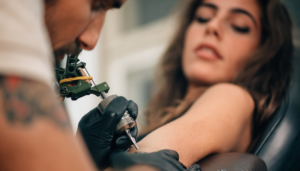Cultural body art has long served as a powerful means of expression, embodying traditions, stories, and social messages. It allows individuals to communicate their identity and heritage visually, often challenging societal norms and stereotypes. Over time, these artistic practices have evolved into tools for activism, enabling communities to foster understanding and acceptance.
In recent years, the act of body art has gained international recognition as a form of resistance. By transforming the human body into a canvas, marginalized groups challenge stereotypes that marginalize or stigmatize them. This creative expression not only celebrates cultural diversity but also promotes dialogue around social issues and human rights.
The history of cultural body art
Historically, many cultures have used body art to signify status, spirituality, or tribal affiliation. Indigenous communities, for example, employed tattoos and body paint to mark important life milestones or to indicate social roles within the group. These traditions were deeply rooted in their cultural practices, often passed down through generations.
During different eras, body art also served as a form of rebellion. In some societies, individuals defied conventional beauty standards or societal expectations by adorning their bodies in unconventional ways. This act of defiance often aimed to challenge the stereotypes imposed by colonial or patriarchal systems, asserting their autonomy and cultural sovereignty.
Modern expressions of body art
Today, body art has taken on a globalized form, blending traditional techniques with contemporary styles. Artists and wearers frequently use tattoos, piercings, and other modifications to express their personal stories or social messages. These artistic choices can confront stereotypes related to gender, race, or sexuality.
Moreover, modern body art communities are increasingly fostering visibility for marginalized groups. By openly displaying their body modifications, individuals challenge societal expectations around beauty and conformity. This movement encourages a broader acceptance of diverse identities and promotes inclusivity.
Body art as activism

The use of body art as a tool for activism has gained traction in recent years. Campaigns that involve tattooing or body painting often aim to raise awareness about social issues such as gender inequality, racial discrimination, or mental health. These visual statements serve as powerful reminders of societal struggles and inspire change.
Public exhibitions and performances featuring body art are also used to challenge misconceptions and stereotypes. Participants often share their stories behind their body modifications, emphasizing the importance of individual agency and cultural expression. These acts promote dialogue and foster greater understanding across different communities.
Challenging gender stereotypes
Body art has become a significant avenue for challenging gender stereotypes and gender-based violence. Many individuals redefine gender roles through body modifications, defying traditional expectations of masculinity or femininity. This reclamation of their bodies fosters a sense of empowerment and self-determination.
Artists and activists use body art to highlight issues such as gender-based violence, discrimination, and societal pressures. By doing so, they challenge the norms that often marginalize and stigmatize LGBTQ+ communities. These visual expressions amplify voices that have historically been silenced, promoting gender equality.
The role of indigenous communities

Indigenous communities have preserved traditional body art as a vital part of their cultural heritage. These practices often carry spiritual or ceremonial significance, asserting their sovereignty and identity in the face of colonial oppression. Many indigenous groups continue to use body art as a form of storytelling and resistance.
In recent times, there is a growing movement to recognize and respect indigenous body art as a form of cultural intellectual property. Artists and community leaders emphasize the importance of safeguarding these traditions from exploitation or misappropriation, ensuring they remain relevant and respectful of their origins.
Body art and social inclusion
The integration of body art into mainstream culture has opened doors for greater social inclusion. When society views body modifications as personal choices rather than markers of deviance, it helps challenge prejudice and stereotypes. This shift encourages acceptance and appreciation of individual differences.
Educational initiatives often promote understanding of the cultural and personal significance behind body art. By sharing these stories, communities can foster empathy and combat stigma. As a result, body art serves not only as self-expression but also as a bridge toward more inclusive social spaces.
Conclusion
Cultural body art continues to be a potent medium for challenging stereotypes and promoting diversity. Its history, from indigenous traditions to contemporary activism, highlights its enduring power to foster understanding and resistance. As wider society embraces these expressions, perceptions are shifting toward greater acceptance and respect.
Ultimately, body art embodies a form of resistance that empowers individuals and communities to reclaim their cultural narratives. By challenging stereotypes and encouraging dialogue, it plays a crucial role in shaping a more inclusive and equitable world.







